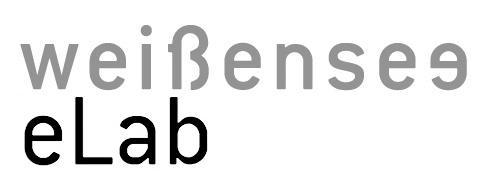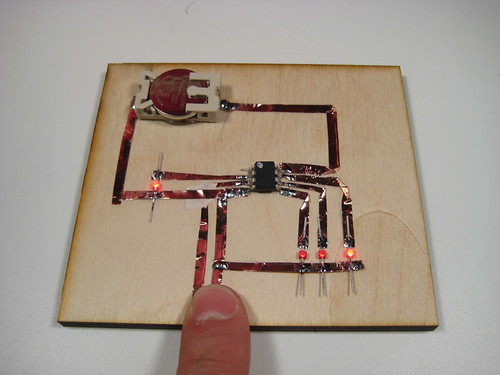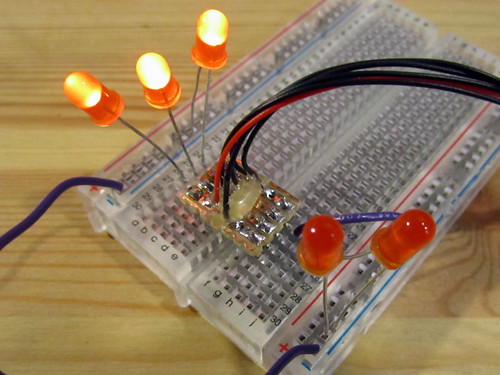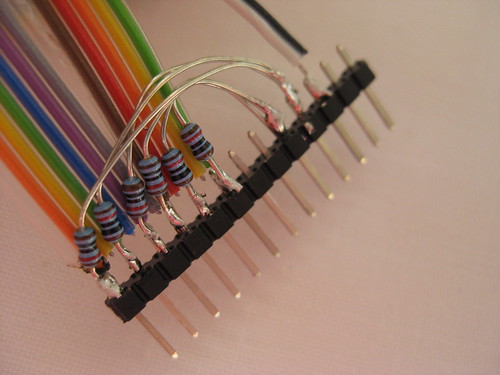Circuits and Code
RabbitControl on Bela
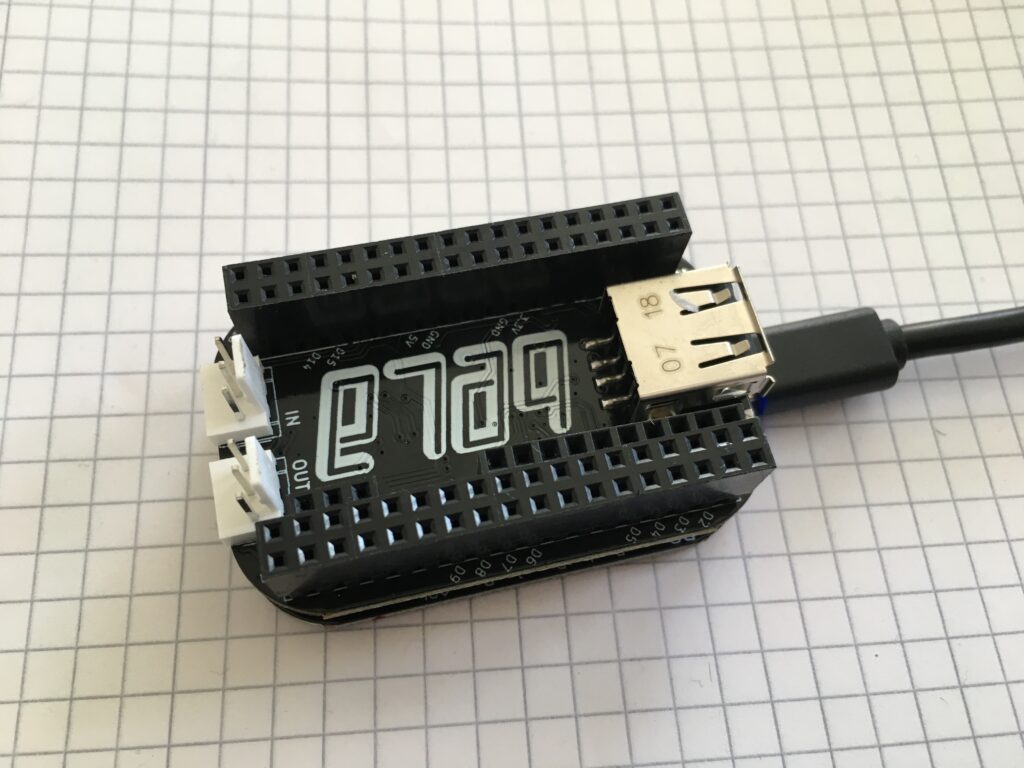
Bela Mini Board (https://bela.io/) is a super nice tool to read textile sensors, and generate sound on board. Bela can run Pure Data, and this is becoming my favorite toolset. One problem of working with Bela is that it does not have monitor, so you can not easily see in realtime what value your sensor […]
Rabbit Control Client on Bela
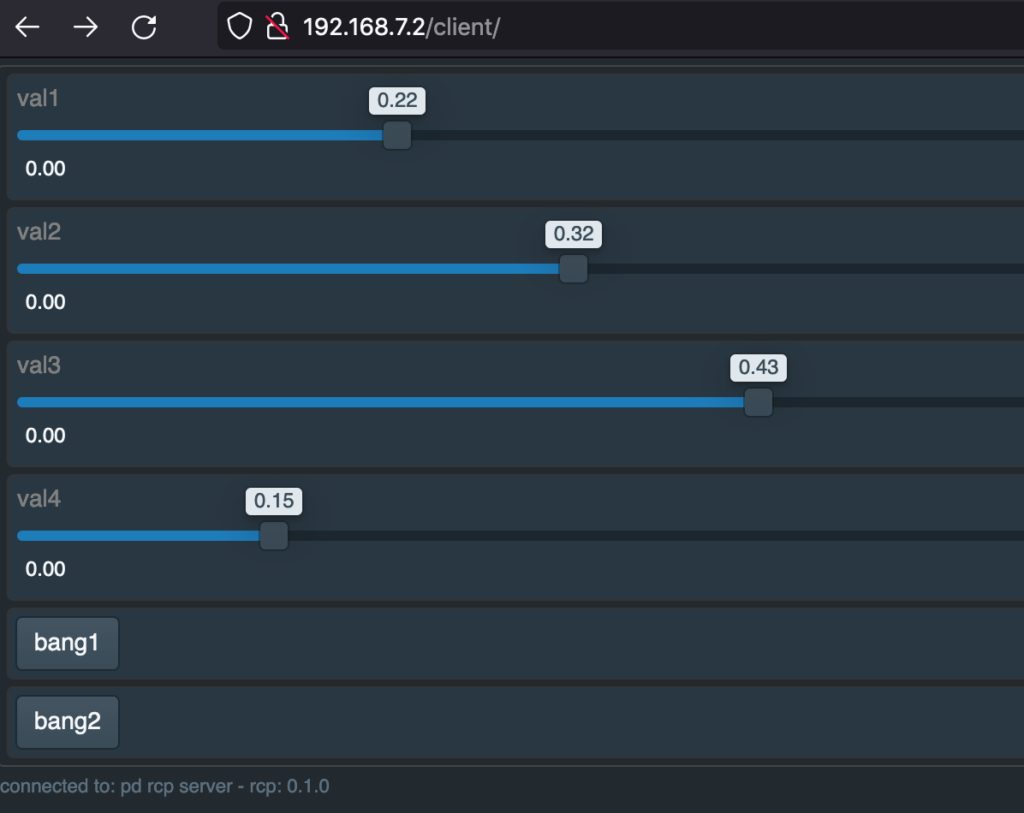
Since the Rabbit Control Client is hosted on the web, if you are offline (for example in network that is not connected to internet) you can not access the client. In this case, you can host the client directly on the Bela board. Download Rabbit Control client from here http://client.rabbitcontrol.cc/client.zip Connect Bela to your computer […]
What is Variables?
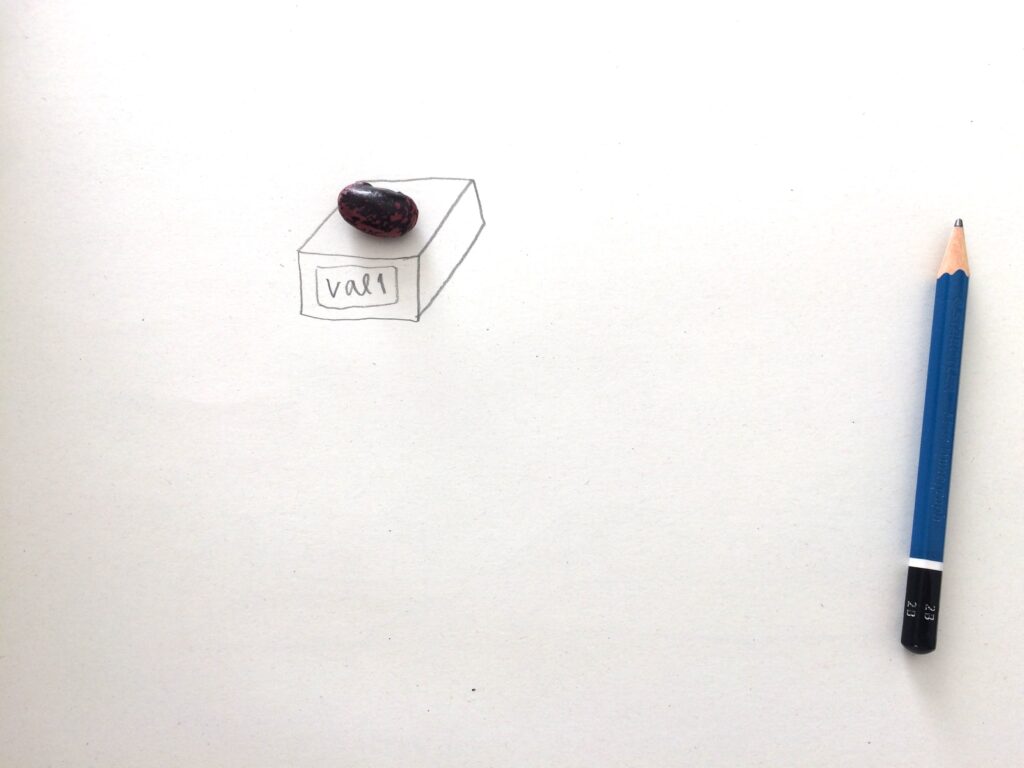
When starting to learn programming, one of the concept that is hard to grasp (it was hard to grasp for me…) is “variables”. “In computer programming, a variable or scalar is a storage location (identified by a memory address) paired with an associated symbolic name, which contains some known or unknown quantity of information referred […]
Bits and Bytes Binary numbers

Computers and microcontrollers internally represent numbers (and all the data) with 0 and 1. This is because these chips are made of a lot of switches that has two states ON (1) and OFF (0). If you look at the historic photos of early computers you will see a lot of switches and operators manually […]
My First Arduino Connection Check

When you first start working with Arudino, you can do the following to check if you computer connects with Arduino Connect your Arduino with your computer through USB cable. Open your Arduino IDE (download from here), and open blink example sketch from File/Examples/Basics/Blink. It will open a Blink sketch window From Tools/Board choose Arduino Uno […]
Voltage Divider with Arduino
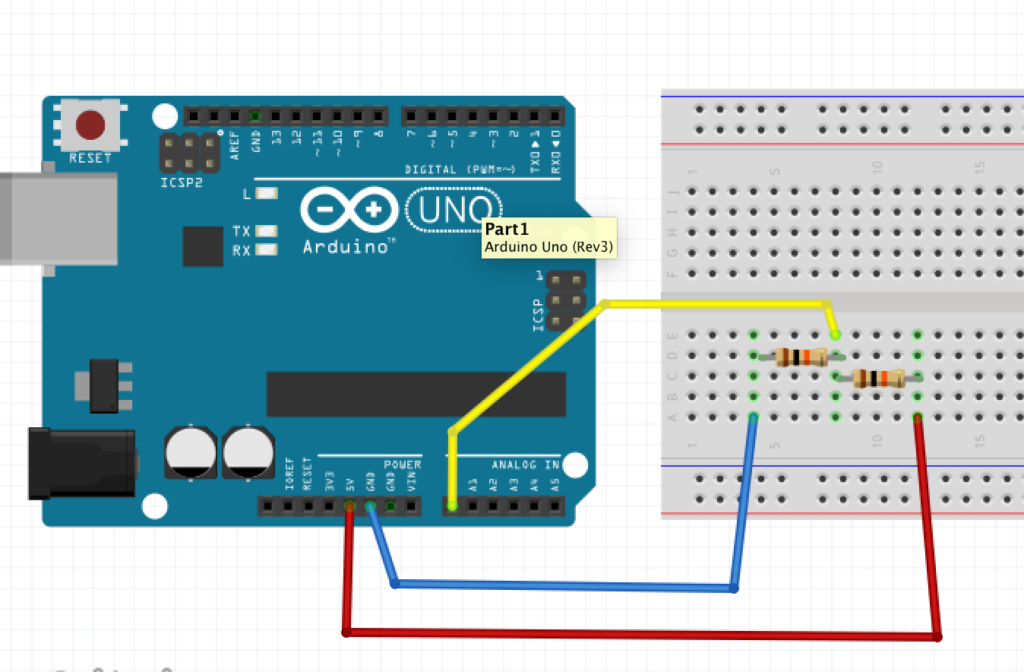
You can divide the voltage with 2 resisters. The voltage gets divided according to the ratio between the 2 resisters. Let’s make an experiment. Here, 5V is divided with 2 resisters. both of them are 10k ohm, so ratio 1:1. I connect the middle to A0, which we are reading with the current code on […]
Graphing and Drawing Sensor Values

CODE EXAMPLES ARDUINO Single Analog Sensor Value Smoothing a Single Analog Sensor Value Multiple Analog Sensor Values Smoothing Multiple Analog Sensor Values ARDUINO —> PROCESSING Graph Single Analog Sensor Value in Processing Graph Multiple Analog Sensor Values in Processing ARDUINO Single Analog Sensor Value Examples: Communication –> Graph This example contains the code you need […]
pressure matrix code + circuit
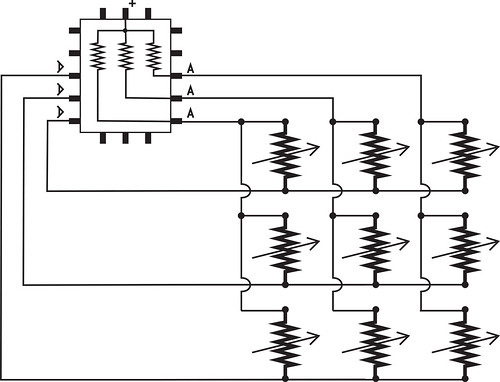
In this post I want to try and explain how a pressure matrix built from conductive rows and columns with a piezoresistive material (Eeonyx, Velostat) in between works, how to wire it up to an Arduino and write the Arduino code that will parse through the rows and columns to read the individual pressure points […]
EMF amplifier
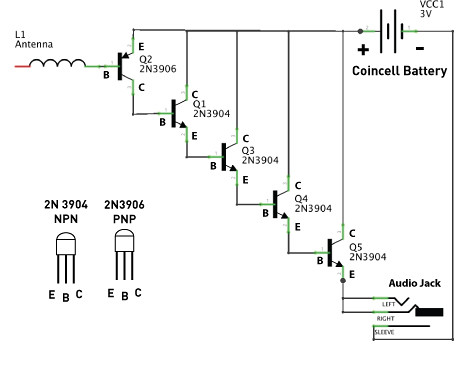
EMF (Electro Magnetic Field) is all around us, but we do not see or hear them. By amplifying it with EMF amplifier, you can listen to them. Many artists work with EMF amplifiers in their artistic expressions. One can also use E-Textile techniques to make soft textile antennas and create wearable EMF listeners. In E-Textile […]
Transistor Switch
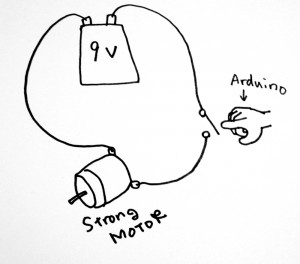
When you are controlling actuator that needs more than 5V or more than 40mA (this is the maximum current digital pins can supply), you can not directly drive this actuator from the digital pins. This is the case, when you want to use strong motor, embroidered speaker, SMA or any heat actuators.. and many more. […]
Voltage Divider

So much of a theory, let’s try this to see if it really works. Here is an experiment with two resister with a multumeter.The first experiment shows two same size resister (10kohm) dividing the provided voltage (5V) in half. The multimeter is set as V– for reading direct current voltage. The probes are connected to […]
ATtiny Serial & Wireless Boards!

For projects with few i/o pins, using an ATtiny is a great alternative to Arduino boards. Using software serial allows you to send and receive data over the serial port via an FTDI board, and connecting to one of Sparkfun’s Bluetooth mate boards makes for a pretty streightforward wireless option. (You could also connect it […]
EL panel/wire inverter hack
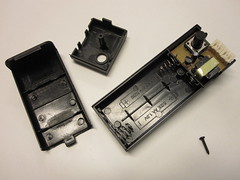
EL panel and inverters are interesting material, but rather hard to control since it involves inverters with AC current. There are some nice tutorials on how to control AC side with triac or EL sequencer at sparkfun, buildr.. so on. But I always had a bit of problem when I want to fade them slowly, […]
Volume Detection
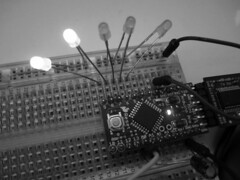
Still a work in progress…. Using an Arduino or an ATtiny microcontroller to translate sound (from a microphone or an audio jack) into light patterns.
simple heat circuit

You can make a simpler heat controlling circuit using TIP122 transistor. The above image is the schematic. If you want to control a lot of heat lines, you can use shift register between Arduino and input pin of TIP122. This method is not good if you turn on/off the heat in high frequency. TIP122 will […]
ATtiny: 7-Segment Display

This circuit uses the ATtiny 8-pin microcontroller which has 5 I/O pins to create a 7-segment display. Since a 7-segment display only requires control of 7 individual LEDs, we use 4 of the ATtiny I/O pins as charlieplexed outputs (n*(n-1)). Leaving the the fifth I/O pin to be used as digital or analog input or […]
Sound Amplifying Circuits

This post covers a few different (very basic) techniques for amplifying various sound sources. On the one hand sound coming from circuits inside toys that make sound (toy piano, singing greeting cards, recording and playback modules…), as well as sound made by generating frequencies using a microcontroller such as the ATtiny or an Arduino board. […]
ATtiny: Programming
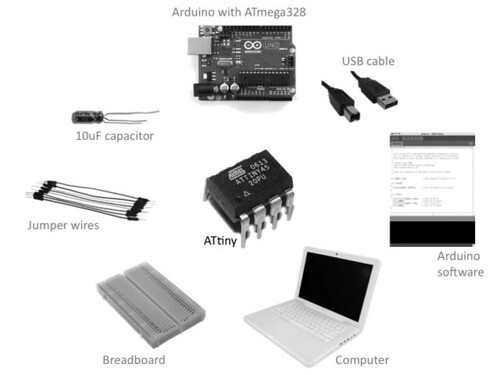
This post is a summary that covers how to turn your Arduino board into an ISP programmer and use it to program an ATtiny85 or 45 8-pin microcontroller.
ATtiny: Soft Serial
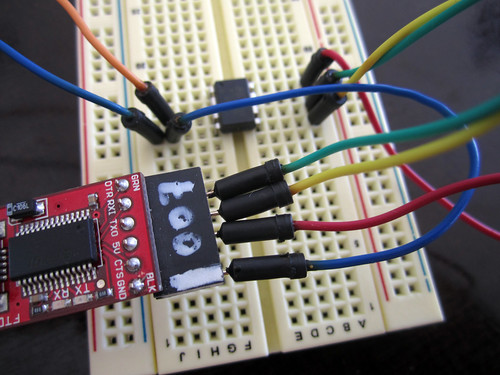
Using software serial library on an ATtiny to send serial via FTDI over USB (or bluetooth) for communication to computer. Useful for debugging!
Arduino as Bluetooth HID
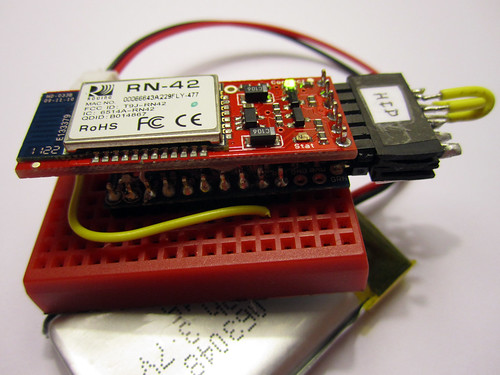
Using Sparkfun’s Bluetooth Modem – BlueSMiRF HID to interface between an Arduino Pro Mini and a desktop Computer as an Human Interface Device (HID). The default mode of the BlueSMiRF HID is as a keyboard (which is very easy to set up), but you can also use it in HID raw mode (see user manual) […]
Visualization: Pressure Sensor Matrix
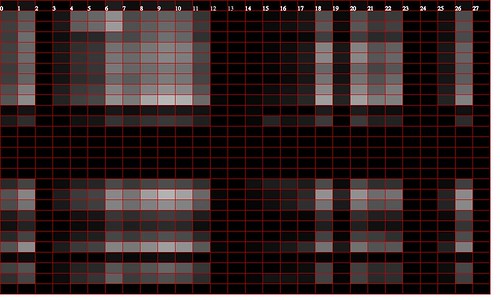
This 28×28 matrix was used in the rSkin project to visualize pressure and location of pressure applied to a rectangular neoprene pressure sensor matrix that was wrapped around a robot arm.
Multiplexed Matrix
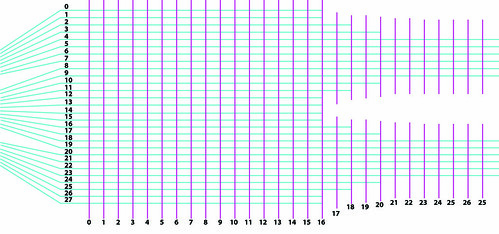
The example in this post shows how multiplexers can be used to increase the number of I/O pins for sensor readings or outputs. A multiplexer chip uses control pins to toggle between multiple channels (3 control pins –> 8 channels, 4 control pins –> 16channels).
Controlling EL Panel and EL Wire

We have made some EL panel and EL wire controlling experiment. The first experiment is with EL sequencer from Sparkfun. The picture below shows how things are connected. EL sequencer has ATMega chip on it with Arduino bootloader. So, you can program it like arduino. (it is same as Lilypad 328 setup) To connect it […]
Heat Controlling Circuit
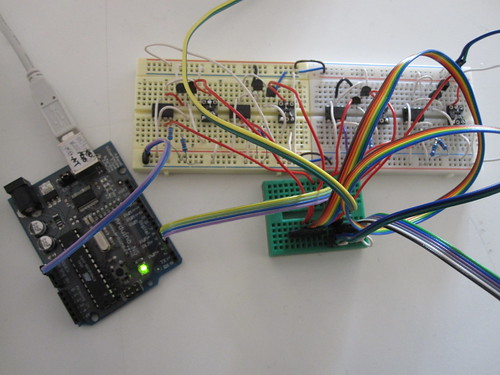
Here is the circuit schematics to control heating elements. I am using MOSFET as a digital switch to control on/off of the each heating element from Arduino digital out pins. The project I developed this circuit for uses multiple heating lines, therefor I am pulsing it with 100ms each. OpAmp and transistors are there to […]
Teensy as HID Device

Use the Teensy board to fake Human Interface Device (HID) input. Human interface devices are recognized by your computer without need for drivers or custom software. They include computer mice, keyboards and joysticks. You can program the Teensy using Arduino!!!
LED with Light Sensor
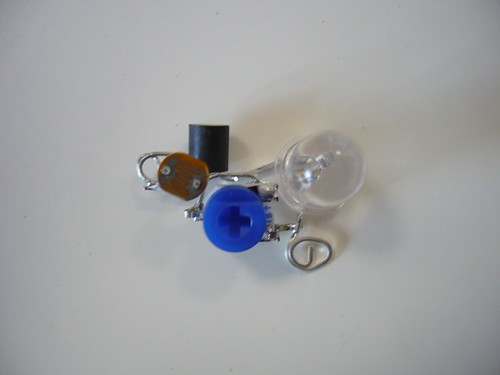
By using light sensor with transistor switch, you can make a “LED that turns on when dark” circuit without bothering with microcontrollers.
Solar Powered Motor Circuit

This circuit was inspired by the Overheadbots. The circuit harvests the energy from a 0,5V 100mA solar cell, storing it in capacitors and then releasing it to drive a motor. This circuit was used in the Solar T-Shirt example project.
Arduino Overview
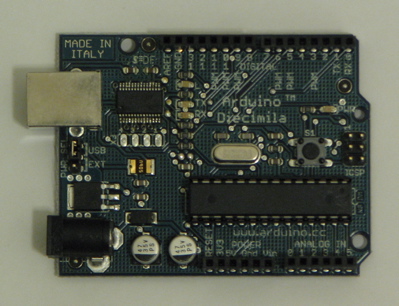
Arduino >> http://www.arduino.cc/ There are nice comparison on various Arduino on Arduino.cc site. USB : Diecimila “The Arduino Diecimila is a microcontroller board based on the ATmega168 (datasheet). It has 14 digital input/output pins (of which 6 can be used as PWM outputs), 6 analog inputs, a 16 MHz crystal oscillator, a USB connection, a power jack, an ICSP […]
RGB Colour Fade

The following Arduino code lets you input two RGB colours and then automatically fades from the first to the second. The following video shows the effects of this code.
Visualization: 2×2 Matrix

This code is great for visualizing pressure sensor matrices using a grid of squares that are filled with gray-scale values from 0-255, corresponding to the pressure sensor value.
Visualization: Graph

In many of our textile sensor videos and examples we use an arduino programmed to read analog sensor values and send them over serial to a computer running a visualization written in processing. We have taken our code from the following examples:
Lilypad XBee Shield
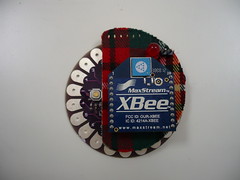
Often, we experienced “Why it does not work?!” moment, because simply connection was not good, or power was not enough. It sounds simple, but if you are using conductive fabric or thread as connection, it happens time to time. so, we made a Xbee shield (PCB) that can snap into Lilypad’s header pin so that […]
Visualization: Drawing
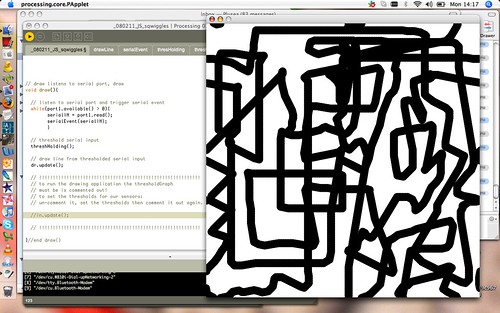
Reads 4 analog inputs and maps them to control the direction of a line being drawn.




